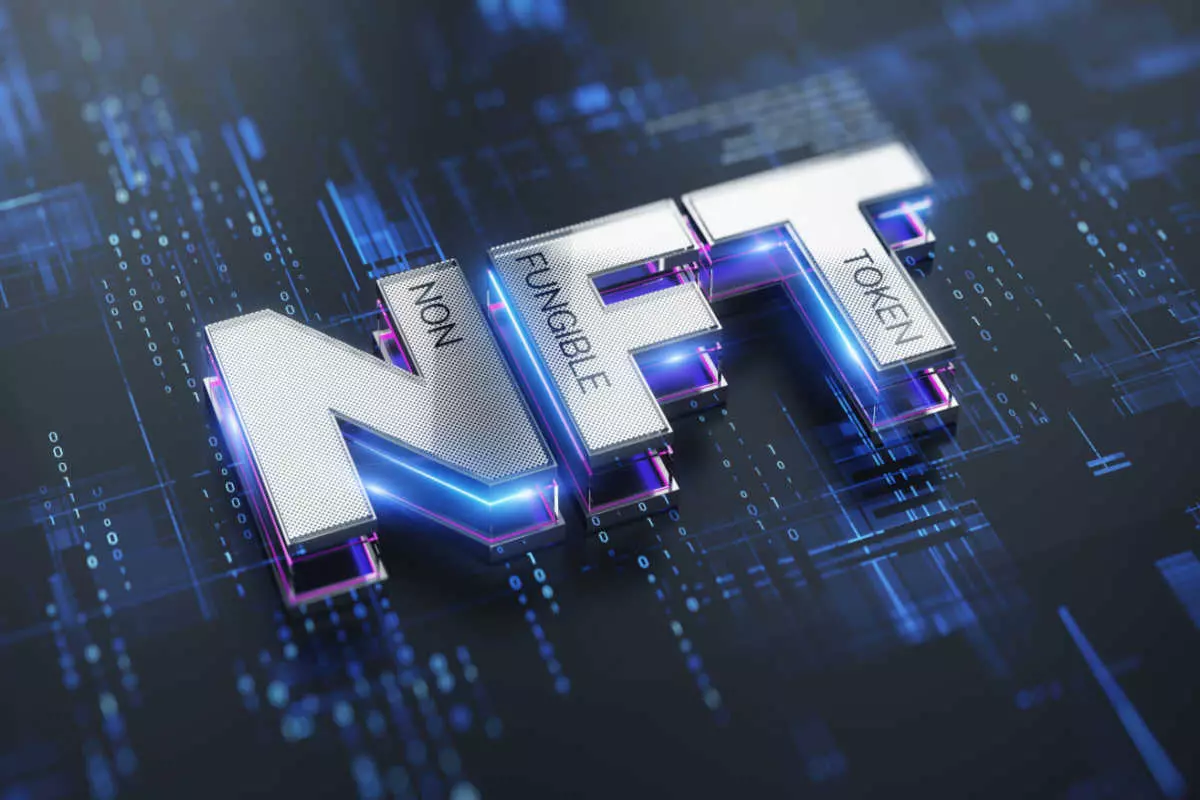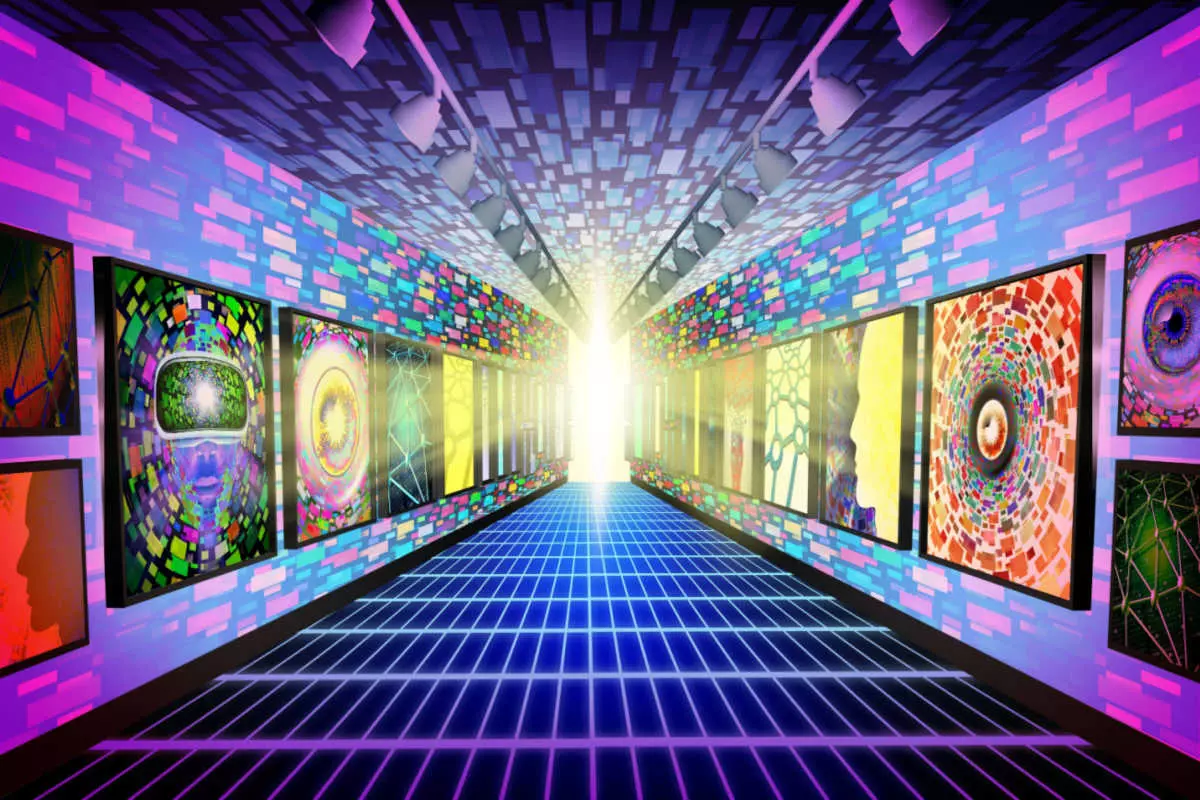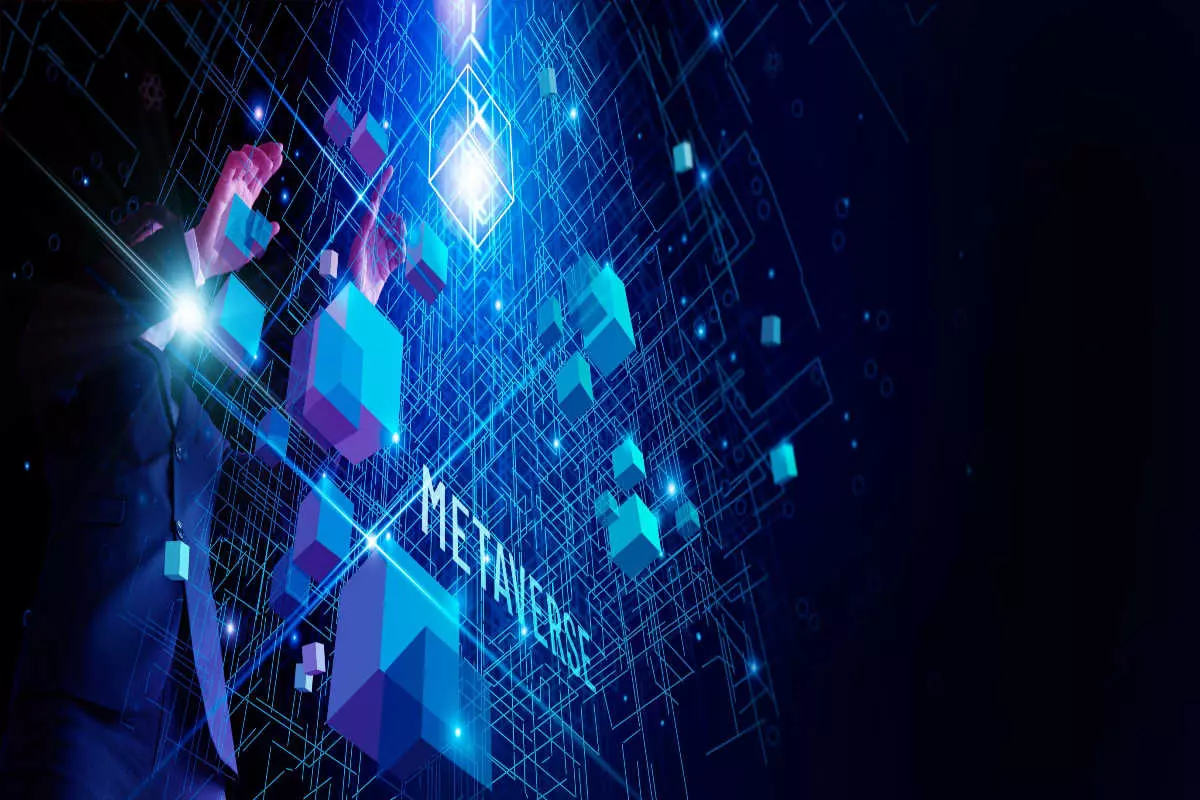The Most Important NFT Trends That You Should Be Aware Of
There is more than one NFT trend shaping the world of non-fungible tokens. More artists are creating works on digital canvases, making their work accessible through virtual reality (VR) or augmented reality (AR). And the bridge strengthening between art and NFTs is making works of art more representative.
Artists say they gain more control over their livelihood by creating their own NFTs and distributing them online via their preferred NFT platforms like OpenSea. Similarly, collectors find more freedom and broader access to art by collecting what they want.
Let’s go through the top NFT trends and see how you can find NFT projects before it’s too late.
NFT Market Growth
A non-fungible token is a digital asset (aka a cryptographic asset). It’s unique and can’t be replaced by another token. Specifically, NFTs represent real-life objects, such as artwork and music, and exist on the blockchain. The latter is a public, digitally distributed, decentralized digital ledger (chain) with no single authority.

Distributed ledger technology (DLT) is a digital system that records asset transactions. And NFTs use distributed blockchain technology to verify ownership of digital assets.
For example, buyers can own part of an NFT of Austrian symbolist painter Gustav Klimt’s painting “The Kiss,” the digital copy of which is divided into 10,000 pieces. As a result, buyers own the digital rights to a single piece.
However, even if buyers purchase all the 10,000 pieces, they won’t own the physical painting. Instead, they’ll be the owner of the digital copy.
Moreover, NFTs will increasingly play an enormous role in developing the metaverse to allow users to own and trade virtual assets in the virtual world. The metaverse is a digital reality combining social media, Internet gaming, AR, VR, and cryptocurrencies. It enables users to interact virtually via the Internet and enjoy more than one NFT trend.
Moreover, NFT sales on the Ethereum blockchain made up about $2.5 billion in March 2022.
Today, investors and businesses see great potential in these digital assets and actively invest in the space. For instance, some travel companies, such as Air Europa and TravelX, sell tickets through NFTs. As a result, no customer service is needed in between.
NFT-based airline tickets are interchangeable. Specifically, TravelX NFT-based tickets can be changed within 48 hours before a flight. For example, a group of travelers can purchase 10 tickets for a single flight and wait until 48 hours before the flight to decide who’s going.
Moreover, when customers buy an NFT ticket from TravelX, they can auction, sell, transfer, gift, or exchange the tickets via a peer-to-peer (P2P) system on TravelX.
NFT Trends 2022
According to Statista, the NFT market revenue is projected to grow by 27.26% from 2022 to 2027. The non-fungible token market growth is a result of increased development that is giving birth to more than one NFT trend.
According to Nasdaq, 2021 witnessed top sales in the non-fungible token market. Specifically, trending NFT CryptoPunk #7523 was sold for $11.8 million, Beeple’s “Human One” for $28.9 million, and the Merge by Pak for $91.8 million. The latter hit the record for the biggest sale by a living artist.
The following are some of the newest 2022 NFT trends that are gaining notoriety:
NFTs Playing a Growing Role in Web 3.0
NFTs will have a growing role in Web 3.0 (aka Web3). The latter is the third generation of the World Wide Web and is still being built. Compared, Web 2.0 is today’s version of the Internet.
Specifically, Web3 represents the third evolution of web technologies. Moreover, it’s revolutionary due to its decentralized nature since applications run on the blockchain. Decentralized means not controlled by a single authority. And decentralized applications are called “dApps” or “dapps.”
Dapps are digital applications running on a blockchain network. For instance, Netflix, Facebook, Twitter, and Instagram are centralized apps. And the social network alternative to Twitter called Peepeth is a decentralized app.
Compared, Web2 uses a centralized database known as the Domain Name Service (DNS). Namely, Web2 is centralized through the monopoly of big players like Google, Facebook, and WordPress. And decentralized Web3 domain options are called Crypto Name Service (CNS).
GameFi and NFTs
GameFi is a cryptocurrency bridging the gap between gaming and finance through NFTs. Specifically, the GameFi ecosystem uses cryptocurrencies, NFTs, and blockchain technology to build a virtual gaming environment.
Here, players complete tasks, battle other players, and progress through game levels to earn in-game rewards. For example, Ember Sword is the in-game currency. The player can purchase it while playing and use it to buy land and collectible in-game NFTs.
Stocks and Property Turning into NFTs
The virtual world is growing, and NFTs are becoming prime assets there. Soon, buying real estate and stocks through NFTs will be standard, alongside purchasing digital photos, videos, and assets for games.
Specifically, virtual real estate can be land or property that people can obtain within virtual environments like the metaverse or games. Namely, one can purchase an NFT house or invest in an NFT apartment in a building in the metaverse.
NFTs as Social Media Profile Pictures
Social media companies now let people use NFTs as their profile pictures (PFPs). Specifically, this NFT trend started in January 2022 when Meta Platforms Inc., the owner of Facebook and Instagram, announced they’d allow users to post non-fungible tokens as profile pics.
For example, Twitter users can synchronize their social media accounts with a crypto wallet via the “NFT Profile Pictures” feature. Once verified, users can set their NFT as a profile picture on Twitter.
Alternative Chain
NFT creators are launching projects on alternative, more affordable blockchains like Avalanche and Solana. Specifically, Solana introduces faster and cheaper transactions compared to the Ethereum blockchain. Importantly, Solana promises censorship resistance and almost non-existent transaction fees to be more appealing to NFT artists and traders.
For instance, Solana-based NFT exchange Solanart has processed over $544 million in NFT sales since its launch in June 2021. In addition, the sales of these digital assets on the Avalanche blockchain have already accounted for $400 million.
Venture Capitalist Investments into the NFT Space Ballooning
Venture capitalists are investing millions into digital art, virtual land, and online collectibles, seeking significant returns. This is one of the indicators of the growth and potential of the market.
For example, Andreessen Horowitz has invested $450 million in Yuga Labs, a blockchain technology company developing NFTs and digital collectibles.
Horowitz is one of the biggest cryptocurrency venture-fund managers. And Yuga Labs is behind Bored Apes Yacht Club (BAYC) comprised of 10,000 unique Bored Ape NFTs valued at $4 billion.
AI-Powered Intelligent Tokens (iNFTs)
AI-powered intelligent tokens are the first intelligent NFTs developed by AI company Alethea AI. Specifically, iNFTs are embedded with a GPT-3 parameter (prompt) and have interactive and animation capabilities. For example, a digital farmer in an NFT farming game can remind the player to cultivate their land.

The third-generation Generative Pre-trained Transformer 3 (GPT-3) model is a revolutionary AI trend. Specifically, this text-generation system was trained on 45 terabytes (TB) of text data from sources such as Wikipedia and books. Namely, GPT-3 is a neural network using deep learning to generate human text using Internet data.
iNFTs are embedded with GPT-3. The latter deep-learning tool allows machines to interact with people. Moreover, being integrated into the NFT’s smart contract, GPT-3 enables these contracts to learn from interactions.
As a result, iNFTs combine AI-driven characteristics and avatars with smart contracts. Such technology can be used for educational and entertainment purposes.
For instance, Alethea has recently introduced Alice, the first human-like intelligent NFT powered by GPT-3. She automatically simulates human speech in real-time.
NFT Membership
NFT membership programs rely on blockchain technology to verify asset ownership. Moreover, they help businesses build online communities, bringing together their most loyal customers.
Specifically, members owning specific NFTs can access exclusive perks, events, rewards, or services. For instance, the Bored Apes Yacht Club membership, the most popular one, lets members access collaborative graffiti boards and merchandise.
NFT TV
NFT TV is an evolving trend where smart TVs incorporate non-fungible token marketplaces and shows on their products. In addition, this concept allows the holders of these digital assets to access exclusive content or even own TV shows.
For instance, a new app called Sator lets consumers earn tokens by watching their favorite shows. Moreover, users can build communities based on their interests and preferred genres.
NFT Loan
To get access to loans, users need to put up NFTs as collateral. After placing collateral, borrowers digitally lock NFTs for crypto coin or fiat money loans. Specifically, borrowers get loan offers after listing their NFTs as collateral. Lenders offer an APR rate and loan terms as the loan’s condition. NFTs are unlocked only after the borrower fully pays back the loan with interest. If the borrowers agree to the terms, loan providers lend the money on NFT lending platforms like NFTfi and Arcade.
For example, on NFTfi, borrowers accept an offer and receive cryptocurrency called wrapped Etherium (WETH) or DAI (a digital asset, aka stablecoin) from the lender’s wallet into theirs. Wrapped Etherium is a version of Etherium allowing users to make pre-authorized bids. And DAI is a stablecoin, a cryptocurrency with a value pegged to the U.S. Dollar.
Then, the platform transfers NFTs into digital vaults for the duration of the loan. Therefore, the repayments should be made before the loan expires. In case borrowers default, lenders can foreclose and receive their non-fungible tokens.
Big Brands Using NFTs
Companies such as Coca-Cola, Nike, Gucci, Louis Vuitton, McDonald’s, Taco Bell, Dolce & Gabbana, and Tiffany & Co have already released their limited digital collectibles. Specifically, big brands are investing in NFTs to build more vital brand awareness and boost customer engagement.
For instance, Coca-Cola launched its NFT in July 2021. Specifically, the company sold a batch of collectibles in an online auction for $575,883.61. Additionally, to celebrate “International Friendship Day 2022,” Coca-Cola released NFTs featuring themes of friendship.
Specifically, the collection represented multi-sensory NFTs housed inside a Friendship Box (being an NFT) packaged as a loot box. And this Friendship Box was a vintage Coca-Cola cooler designed as a dynamic loot box.
Personality NFT
Personality NFTs are designed to substitute a real-life personality with a digital one to represent identity. And this isn’t something new for stage performers, including musicians. This type of digital asset lets people share their personality with others and find like-minded people over the Internet to build a community.
For example, personality NFTs allow people to walk around in the metaverse and find people to talk to based on their common interests. Specifically, metaverse users can take a psychometrics test. The latter assesses personality traits, value systems, and identity.
After completing the test, they can mint their personality on the blockchain and share it with others. “Minting” means publishing a unique digital asset on the blockchain to trade it.
How to Find NFT Projects Early
The fast-growing non-fungible token market offers trending NFT projects, such as Tamadoge and Silks. And how can you find NFT projects early? Specifically, look at the top marketplaces, such as OpenSea and Rarible. On OpenSea, the “Explore” tab can help your research projects and browse through rankings to discover popular options. Moreover, use non-fungible token calendars such as the NFT calendar offered by Business2Community.

An NFT calendar is an online platform where users create and share updates and events concerning NFTs, such as the latest NFT drops.
In addition, pay attention to non-fungible token rarity and the team behind it. Specifically, the project should have an established development team. As for rarity, it shows how uncommon an NFT is, which determines the value of a specific NFT within a collection. Rare ones have a higher value.
Summary
The non-fungible token market is evolving and granting people and businesses more than one NFT trend. Specifically, NFT trends allow companies to build brand awareness and boost customer engagement.
For example, purchasing real estate and stocks through NFTs is one of the top trends. Moreover, big brands, such as Nike, are using NFTs for their products and services. Additionally, some financial companies are already offering NFT loans.
Try our real-time predictive modeling engine and create your first custom model in five minutes – no coding necessary!
- Fully operational AI with automated model building and deployment
- Data preprocessing and analysis tools
- Custom modeling solutions
- Actionable analytics
- A personalized approach to real-time decision making
Table of Contents
- NFT Market Growth
- NFT Trends 2022
- NFTs Playing a Growing Role in Web 3.0
- GameFi and NFTs
- Stocks and Property Turning into NFTs
- NFTs as Social Media Profile Pictures
- Alternative Chain
- Venture Capitalist Investments into the NFT Space Ballooning
- AI-Powered Intelligent Tokens (iNFTs)
- NFT Membership
- NFT TV
- NFT Loan
- Big Brands Using NFTs
- Personality NFT
- How to Find NFT Projects Early
- Summary



